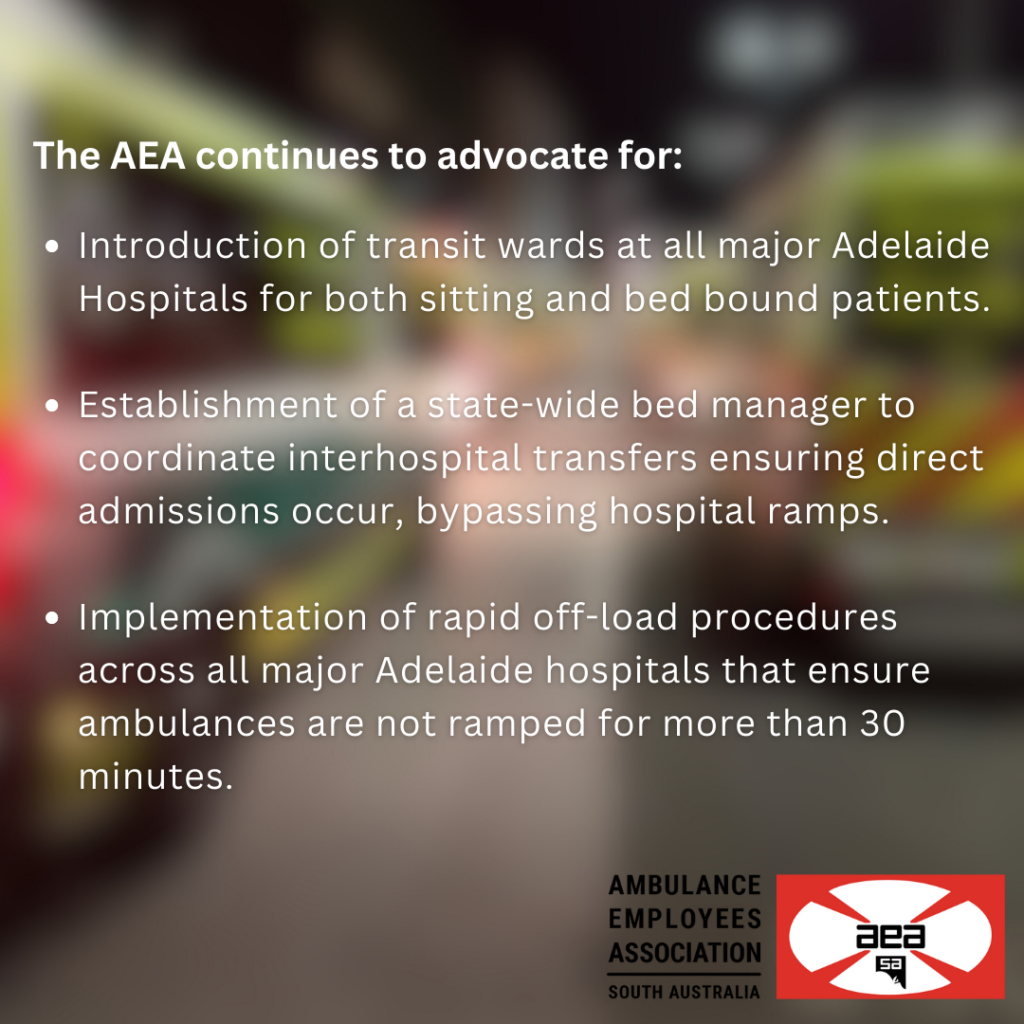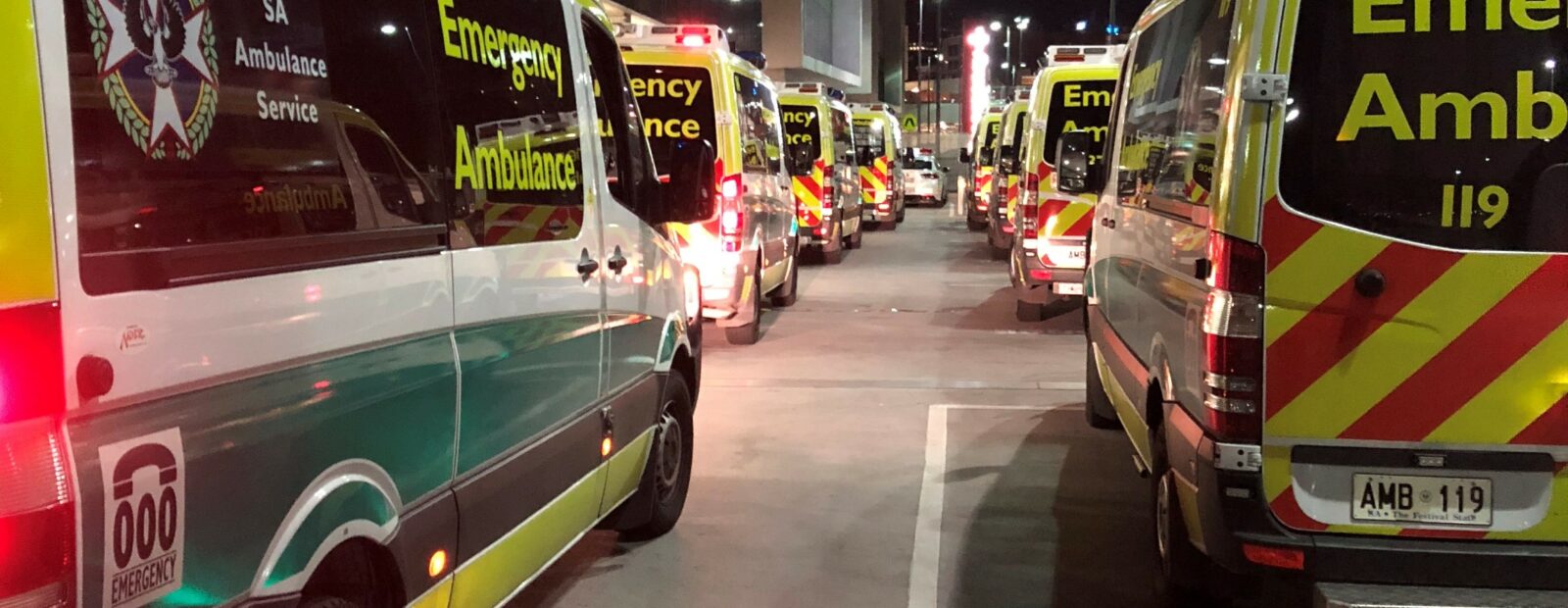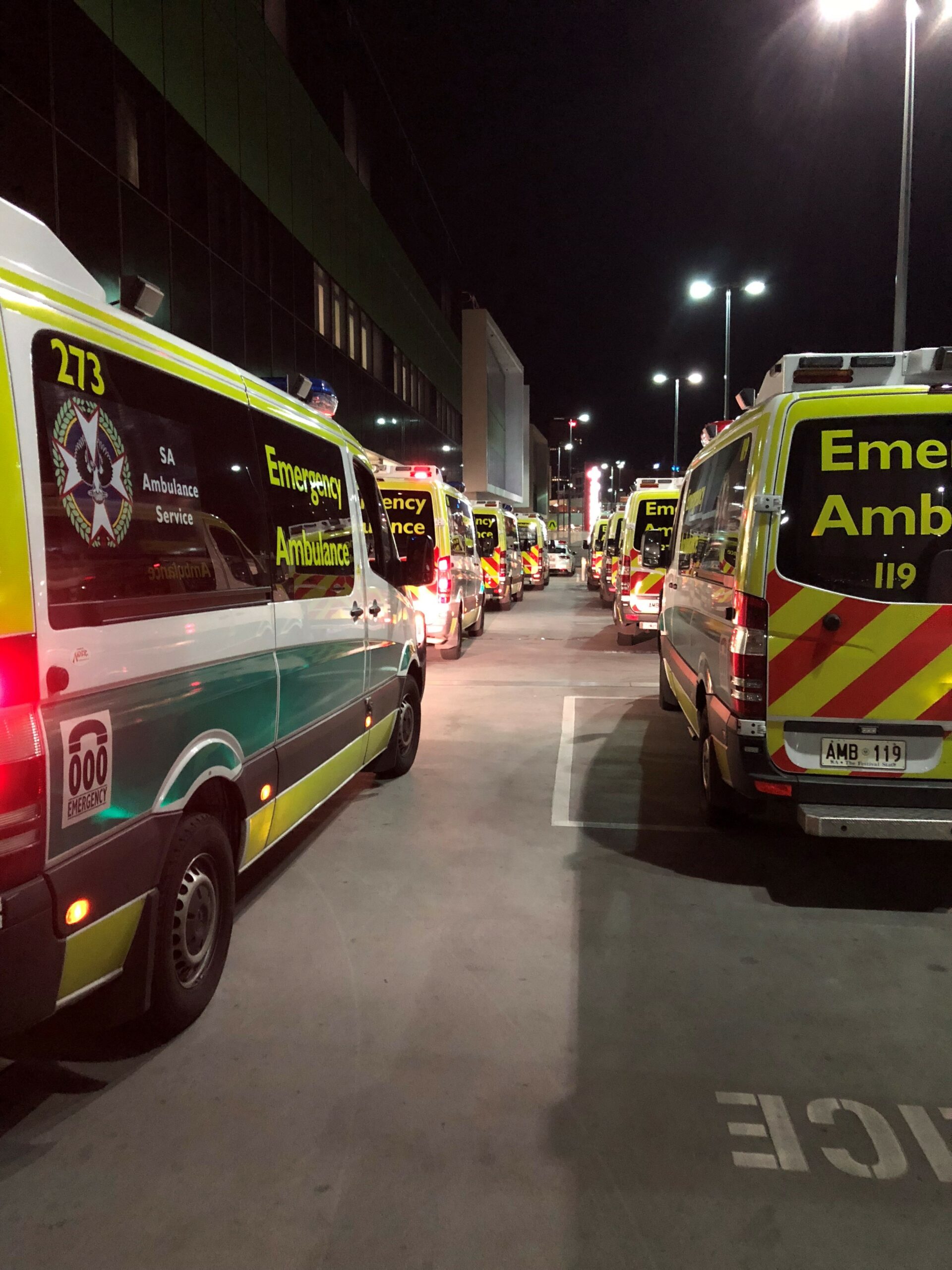The AEA and it’s members are disappointed to see the hours lost to ramping increase over March 2023 to almost 4,000 hours in a single month, equivalent to 11 ambulances crews ramped each day for their entire shift. This continues to be a difficult nut to crack and, despite significant efforts being made to bring ramping down to a manageable level, there is obviously a need to do even more.
There is still a strong commitment from Government, SA Health and SA Ambulance Service to explore every possible way to reduce ramping. The AEA, along with other health unions, are continuing to play their part in advocating for measures aimed at building resilience into the system, so that the SA community can have confidence that the health system will be there for them in their time of need. Lack of capacity remains the primary driver for ramping and we are reassured that of the 550 additional beds committed these are being brought online as quickly as possible.
Whilst ambulance response times are showing some signs of improvement, The AEA will continue to advocate for what is needed and to highlight concerns where deficiencies in the system put patients in the community at risk. In stark contrast to the previous Government, the current Government are being open and transparent about the extent of the problems, and are receptive and responsive to constructive suggestions, and are actively working with Ambos to find durable solutions to the ramping problem.

The AEA continues to advocate for;
- The introduction of transit wards at all major Adelaide Hospitals for both sitting and bed bound patients.
- The establishment of a state-wide bed manager to coordinate interhospital transfers ensuring direct admissions occur, bypassing hospital ramps.
- The implementation of rapid off-load procedures across all major Adelaide hospitals that ensures ambulances are not ramped for more than 30 minutes.
The AEA details each proposal as below, which were tabled to all political parites at the 2022 State Election.
Transit Wards (Transfer\Discharge Wards)
A common problem that Ambulance Officers face, when transferring patients out of major hospitals, is a delay in collecting patients from hospital wards. Currently, in most metropolitan hospitals in Adelaide, when a patient is ready to be discharged and requires ambulance transport (e.g. to a RACF or to a disability facility) they remain in their ward waiting for a transfer ambulance to arrive. As this is not an urgent ambulance attendance, these transfers can be significantly delayed by many hours. During this time the bed is unable to be utilised by a patient awaiting admission from the ED.
Further delays occur when an ambulance arrives and the patient is not ready to be discharged, despite being booked by the hospital in advance. Delays with medication dispensation by pharmacy, or discharge paperwork yet to be completed, can all contribute to delays in the patient’s discharge leading to the ward bed remaining occupied and not being able to receive the next patient.
Another major factor contributing to ramping is patient transfers from regional and peri-urban hospitals to major metropolitan hospitals. Commonly these transfers occur without a ward bed ready for the patient and they are frequently ramped until a ward bed becomes available. These patients seldom require the services of an Emergency Department, as they have been assessed and stabilised at their local regional hospital prior to transfer. They further exacerbate ramping and prevent finite ambulance resources from being able to attend other patients in the community.
These delays can be alleviated by dedicated ‘transfer wards’ in each major hospital that have nursing, pharmacy, and ambulance personnel in situ. These wards provide an entry point for incoming inter-hospital transfers, as well as a holding ward for all pending discharges awaiting ambulance transfer. This ensures that patients, who have been transferred from a regional center awaiting a bed, are not spending time in an ED, or on a hospital ramp, tying up an ambulance resource. Beds in hospital wards would also be freed-up to admit patients from the ED as the discharged patient would wait in the transfer ward for the ambulance to arrive. Such a system would provide significant efficiencies for hospitals and the ambulance service, as well as providing much needed improvements to patient flow throughout the hospital.
Statewide Bed Manager
A state-wide centralised ‘bed manager’ that has operational oversight and control of all state-wide transfers into our major hospitals should be appointed centrally so that no patient is transferred to a major hospital without a pre-arranged bed. Often patients are transfered from regional or other metropolitan hospitals to a major hospital (e.g. RAH, FMC or LMH) for ongoing treatment that cannot be performed at the sending hospital.
Often these transfers arrive at the major hospital and there is no ward bed for the patient and the ambulance crew is subsequently ramped. This not only impacts ramping and ambulance availability, it often results in the only local ambulance from a regional location ramped in the metropolitan area.
Patients who have been treated and assessed at one hospital should not have treatment and diagnostics re-occur at major hospitals, this not only results in further ramping but also duplicates treatment that has already occurred and reduces the Emergency Departments ability to see further patients. All of these patients should only be transferred directly to the specialist unit they have been accepted by and bypass the Emergency Department.
To ensure this a state-wide bed manager\coordinator must be implemented to overview all interhospital transfers across the state and should be based in the State Health Control Centre in the SAAS Emergency Operations Centre 24/7.
Rapid Off Load Procedures to Ensure a Mandatory 30 Minute Transfer Of Care.
A key policy that the AEA has suggested is a mandated 30-minutes transfer of care policy. This is supported by the Australasian College for Emergency Medicine (ACEM) Position Statement on Ambulance Ramping which states that; “within 30 minutes of arriving an ED, 100% of patients should have their handover completed”. It is the view of the ACEM that ramping (delayed transfer of care beyond 30 minutes, per the SA Health Service Level Agreement) “should not be allowed to occur. Where it does, it is an indicator of health system dysfunction that compromises patient care and increases the risk of adverse health outcomes”. Current policies and procedures within SA Health are demonstrably inadequate at mitigating this practice.
The AEA has advocated for some time that rapid off-load procedures should be implemented to ensure that ambulances can be freed from hospital ramps within 30 minutes to ensure; ambulance availability to the community, patient safety (e.g. mental health, pressure injuries and pain management of ramped patients) and fatigue management for SAAS crews (experiencing delayed meal breaks and/or post shift overtime).


